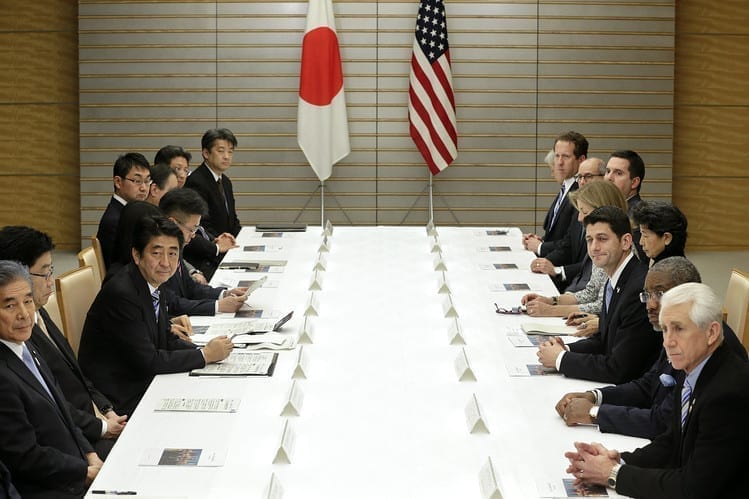With Trump’s inauguration only a couple days away, some in the political arena are still holding out hope that the Trans-Pacific Partnership (TPP) will survive, despite the fact that Congress effectively put a stop to it, much to President Obama’s dismay. Why did they stop it, though? Was the free trade agreement really so bad? Well, yes and no. While it would have opened up more trade between twelve different nations, a big reason why Congress decided against it was because they shared the concerns of many TPP critics, including President-elect Trump, and were wary of the “pact’s complexity and lack of transparency.” After all, the full text included 30 different chapters.
With Trump’s inauguration only a couple days away, some in the political arena are still holding out hope that the Trans-Pacific Partnership (TPP) will survive, despite the fact that Congress effectively put a stop to it, much to President Obama’s dismay. Why did they stop it, though? Was the free trade agreement really so bad? Well, yes and no. While it would have opened up more trade between twelve different nations, a big reason why Congress decided against it was because they shared the concerns of many TPP critics, including President-elect Trump, and were wary of the “pact’s complexity and lack of transparency.” After all, the full text included 30 different chapters.
So anyone holding out hope for the TPP can pretty much just let it go now. Many of Trump’s senior advisors have stepped forward to say the Trump administration will not resurrect the TPP, including the new head of the National Trade Council, Peter Navarro. Additionally, even during the election, Trump decried the TPP for “making it easier to ship jobs abroad, giving corporations more power, and proffering byzantine regulations.” So what are his plans regarding free trade once becoming president? Well, in place of complex free trade agreements like the TPP would have been, he has made promises that his administration would focus on drafting and creating “simpler, less top-heavy bilateral pacts that would be more transparent and accountable to U.S. officials, thereby making them easier to renegotiate if necessary.”

But what was the TPP, and why are so many people eager to see it resurrected? For starters, the TPP would “have set new terms for trade and business investment among the United States and 11 other Pacific Rim nations,” including the United States, Japan, Malaysia, Vietnam, Singapore, Brunei, Australia, New Zealand, Canada, Mexico, Chile, and Peru. The group would have made up “an annual gross domestic product of nearly $28 trillion,” representing about 40% of the “global GDP and one-third of world trade.”
This is why many people, including economists like Larry Kudlow and Stephen Moore, are holding out hope that the TPP might at least be renegotiated in the near future. If anything, they’re hoping Trump at least has a backup plan, something the president-elect has already hinted at during his talks of setting up “transparent bilateral trade agreements that do not harm U.S. workers.” But what would a backup plan look like? Well, a US-Japanese Trade Deal wouldn’t be out of the realm of possibility.
If the TPP would have passed, it would have brought the United States and Japan together, for the first time, into a free trade agreement. Having the world’s first and third largest economies united under a free trade agreement would certainly have its possibilities, and officials and economists on both sides would love to see such an agreement made between the two countries. After all, an agreement with the United States would allow Japan to become more “more competitive and to further globalize itself.”
One thing is for certain, Trump will have a lot on his plate from day one in the Oval Office. It will be interesting to see how everything plays out where free trade is concerned.


Join the conversation!